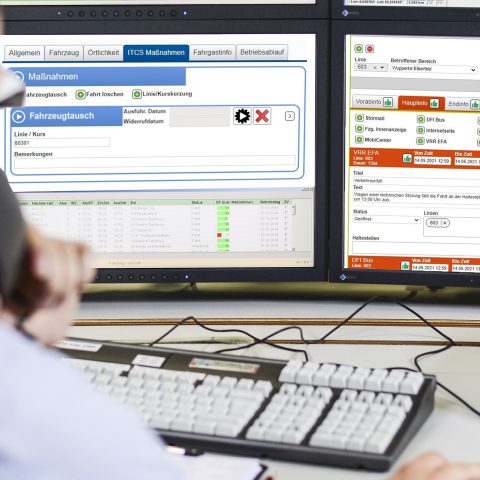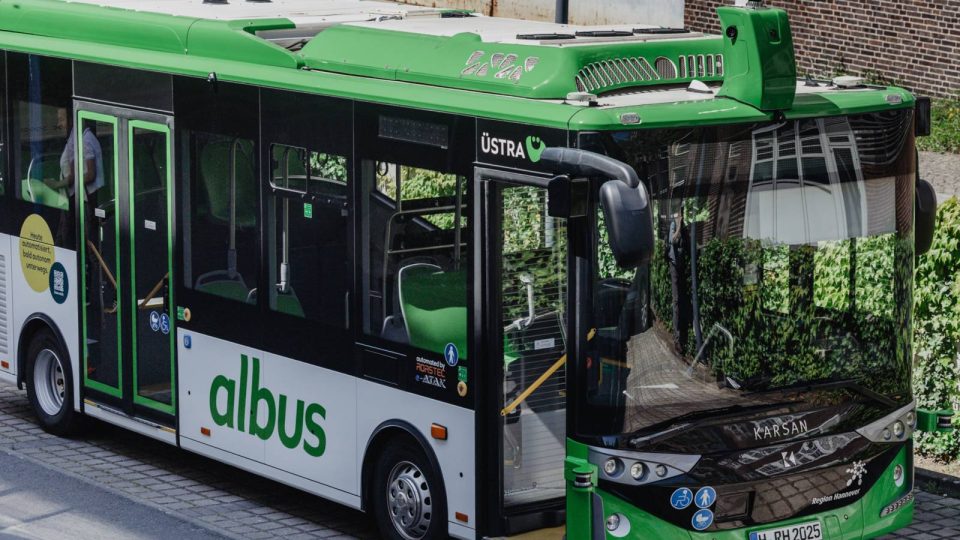INIT to showcase next generation of planning, dispatch, telematics, and ticketing system at UITP Summit Barcelona
INIT announces it will be presenting at the UITP Global Transport Summit from June 4 to 7 in Barcelona showcasing a next generation of its integrated planning, dispatch, telematics, and ticketing system MOBILE. UITP Summit will be among the main public transport exhibition in 2023. Ticketing is king… In order to encourage people to switch to […]

INIT announces it will be presenting at the UITP Global Transport Summit from June 4 to 7 in Barcelona showcasing a next generation of its integrated planning, dispatch, telematics, and ticketing system MOBILE. UITP Summit will be among the main public transport exhibition in 2023.
Ticketing is king…
In order to encourage people to switch to public transport, first and foremost the purchase of tickets must be simplified (a point strenghtned also in a recent PwC survey). This works well when passengers pay with credit or debit cards, smartphones or smartwatches – in other words, they use the media they already carry with them and do not have to worry about finding the right tariff.
INIT will present Ticketing-as-a-Service (TaaS) at its UITP booth. It “enables transport companies to quickly introduce Open Payment Ticketing according to the EMV payment method and without extensive investment – even in addition to existing fare management systems. This is made possible by a cloud-based platform. It allows transport companies to manage their fares and best fare options using a browser application and it processes payments. As a result, transport companies can offer maximum service with minimum effort – at minimal costs”, as the company states.
INIT at UITP Summit Barcelona with new ITCS
The supplier of integrated IT solutions for public transport INIT will be in Barcelona with its nextGen products and solutions, featuring semi-automation, optimization tools, assistance systems, and machine learning.
INIT’s MOBILE-ITCS nextGen, the new generation of their Intermodal Transport Control System, will be showcased at the booth. An up-to-date user interface in UX design with many new functions allows dispatchers to perform their tasks more easily and more quickly, the company says.
INIT, the focus on passengers’ information
But what about passengers’ information? It’s a field covered by INIT’s RESPONSEassist. It can generate and send precise and consistent passenger information – largely automated by means of templates and meta information – with one click across all channels. In addition, RESPONSEassist integrates dispatch, passenger information and operational documentation processes and supports the work in the control center in a completely new way. Disruptions can be handled efficiently with a prepopulated online form and a predefined, recommended course of action. In this way, dispatchers can perform their tasks efficiently and at the same time manage all channels of passenger information within a minimum amount of time.
Passenger information can also be used to provide passengers with an additional service: vehicle occupancy levels. It allows passengers to search for connections that are less busy. Using a patented process, “INIT’s MOBILEguide does not only factor in current vehicle occupancy levels, but also the number of passengers that are expected to alight at each stop. Occupancy predictions calculated in this way are characterized by a high degree of accuracy, which was not the case with legacy systems”, the suppliers stresses.
INIT at UITP Summit 2023: e-buses without issues
INIT new solutions on showcase at UITP Summit 2023 will also embrace the field of fleet planning when it comes to e-buses.
The planning and simulation system eMOBILE-PLAN calculates the effects of various parameters on the total costs and handles e-bus-specific requirements for block building. The Intermodal Transport Control System MOBILE-ITCS continuously monitors electric vehicles’ state of charge and alerts dispatchers when vehicles reach a critical state of charge. This is all based on reliable range prediction, something which is becoming increasingly precise thanks to machine learning. The charging processes themselves can be controlled and monitored with the MOBILEcharge intelligent charge management system. Having a close connection to the depot management system, MOBILE-DMS ensures that current states of charge, charging capacities and planned departures can be taken into account. With the help of the driver assistance system MOBILEefficiency, energy consumption is monitored in order to further improve range prediction. This integrated overall system covers all operational e-mobility requirements.









